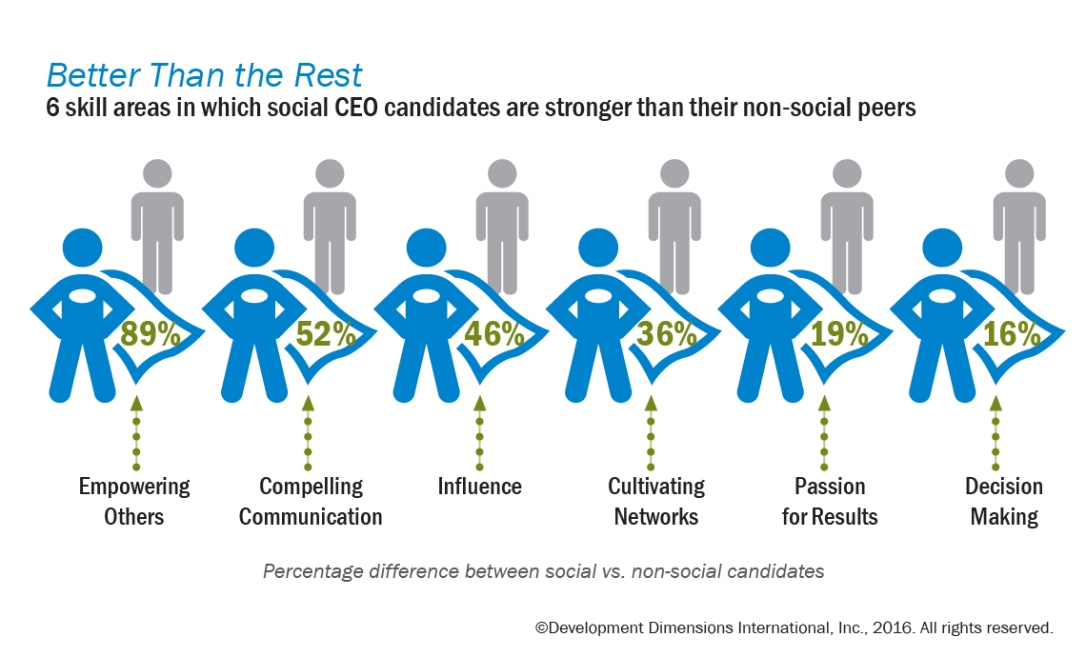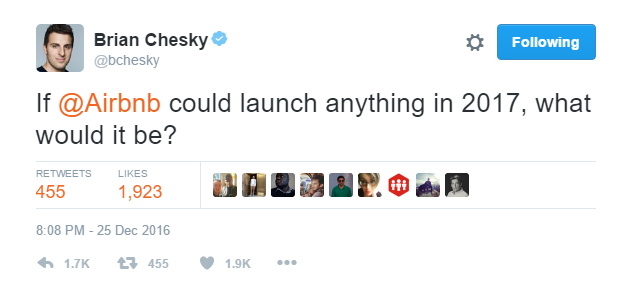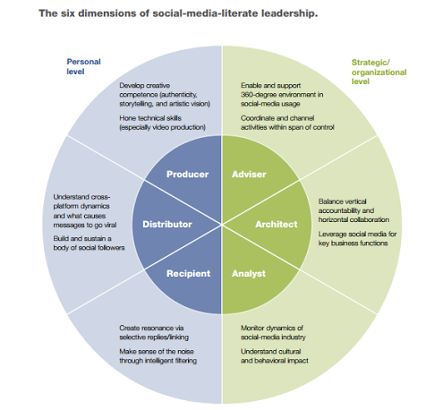By: Nikki Weissman
We expect to see our favorite celebrities on social media giving us a peek at their real lives often making us feel that much more connected to them. As social media, more specifically Twitter, is becoming a playground for words where people from all industries go to speak their minds, it is becoming more and more popular to see leaders from organizations big and small online as well. This isn’t just space for millennials and some hip elders to discuss pop culture, current events, etc. anymore. Extensive marketing campaigns could be replaced by one single Tweet. A C.E.O can gain information on their clients with 140 characters or less. There are so many opportunities that come from leader having a presence on social media, and it gives them the chance to connect on a more personal level.
Taking the Leap
The first step to getting online could be a difficult one to make. When someone who is as busy as a C.E.O thinks of creating a twitter account they think of it as another thing added to their plate and all of the negatives that can come with a poorly worded Tweet. It is important for leaders to stop thinking of it as a responsibility, but instead “start seeing it for what it can be instead: a personal toolbox for improving your practice of leadership” (Samuel, 2012). It could be time-consuming to get this ‘toolbox’ setup, but once you start you will see how social media will enhance your leadership. Samuel gives a few tips on how to embrace social media and implement it into your daily lives. First a foremost you should create a leadership dashboard where you can set aside just 15 minutes to not only “monitor the Web for intelligence about your business and brand; mine it for ideas, news and research that will help you develop as a leader” (Samuel, 2012). In the world of social media, there are many distractions, so it is essential to stay focused. The next suggestion is to change channels. If it’s getting difficult to spot the urgent emails escape the inbox by switching to Twitter as your preferred channel for high-priority or time-sensitive communications. Set a Twitter account to follow all your direct reports, key clients, and trusted colleagues. Let these folks know the best way to reach you is via Twitter Direct Message (Samuel, 2012). Samuel also suggests building a CEO network that consists of a set of five to 15 respected and trusted executives, leaders, and advisers whose knowledge, insight and loyalty will have a meaningful impact on your own professional capacity and performance (Samuel, 2012). But, don’t forget to include things that you enjoy to help you relax and decompress throughout the stressful day. Twitter allows you to amplify your voice and let it reach more people than usual by posting your messages online. Twitter could be a difficult space to manage, but with the proper guidance, it will do more good than harm.
Staying Connected

Social media is not about social media; it’s about leadership and connections. Billions of conversations are taking place on social networks every day. But for “busy executives and business owners, time constraints make it hard to dedicate time to demystifying these communication opportunities” (Kasian-Lew, 2014). Many individuals think of social media as a distraction. The truth is it has introduced a dramatic shift in the way we engage that is turning business on its head. For those who know how to use it properly, social media offers an unparalleled business opportunity and is critical for success in an interconnected world. “The number of people online has doubled since 2007 to 2.55 billion, and 91 percent of them use social or mobile networks.That’s an awe‐inspiring number, but it’s just the start of a steep trajectory” (Kasian-Lew, 2014). With the number of people still joining social networks, it shows that this is more than a fad or trend, but it is here to stay and it useful for various types of people. In the business world, “many leaders remain stuck at arms-length from those they lead and serve, relying on specialized teams to interact with customers, their direct reports to keep tabs on how employees are doing, and on the digital natives in their organization to stay abreast of new technologies” (Li, 2015). When you add social media into the picture, those gaps tend to close as are just a click away from anyone and your followers can keep up in real time.
Why be Social Media Savvy

Twitter has many affordances that would not be available anywhere else. It gives users opportunities to instantly connect, communicate, and collaborate with anyone else on the network. Not only does Twitter, or other social media platforms, bridge the gap between the leader and those who she/he leads, a leader can use Twitter to their advantage to engage and receive ideas from what the public wants/needs out of them, their organization, or product. The CEO of Airbnb found this out by posting a simple tweet on Christmas day asking followers “ If @Airbnb could launch anything in 2017, what would it be? He spent hours on Twitter engaged in market research that would drive Airbnb’s market strategies in 2017. Twitter users relished the opportunity to send in their suggestions, and even more importantly, they received acknowledgment that their ideas were being heard and considered by the company’s ultimate decision-maker (Neal, 2017). Without such a public platform Airbnb or any other brand would never have had the opportunity to gain information this quickly from the public or made the general public feel so important. Social media gives organizations new opportunities that were never before seen. While that story teaches a lesson about how CEOs can use social media to strengthen the public perception of their brand, it also delivers a powerful experience that corporate leaders who know how to engage well on social media also exhibit other strengths that make them a better leader (Neal, 2017). Shortly, most leaders will be on online networks, and it will be a trait that is almost required. We saw how useful it was in this situation and this was not a one-off.
Where to go From Here
In today’s day and age, most individuals are starting to expect to see a leader to be on social media and more specifically Twitter They want to know that a company has a face, voice, a personality. They want to feel a connection to a person (Hoffman, 2016). This is not something an individual leader should fear but instead, embrace the opportunity to openly discuss the truths of your organization’s direct to the public in an open forum. Society is more likely to have a positive view of a leader if they can connect with them in a mature and honest dialogue. In essence, leaders that engage in social media exponentially increase the brand’s digital sphere of influence. Simply put, they reach more people than organizations that don’t have leaders using social. This reach means more brand awareness, a more significant platform for message amplification, and a broader net for talent attraction. For those who think maintaining a Twitter account will take up too much time, Hoffman explains that “spending 15 minutes daily on Twitter is more effective than a linear ad campaign and the payoff will be spherical as well” (Hoffman, 2016). What type of conversations should leaders be having on Twitter? Their primary responsibilities are the human experience of the people that touch the brand — employees, customers, communities. Leaders that are having conversations with these constituencies are directly connected to influencing the brand experience externally and internally (Hoffman, 2016).
Conclusions:

There are a lot of negative connotations connected to social media mainly because some individuals do not understand how to manage and use Twitter. The same things a leader needs to be careful about in their daily lives, they should be cautious about doing online: don’t be boring, don’t be stupid, don’t be fake, don’t be a jerk.This is why there is a direct correlation between emotional intelligence, EQ, and how a leader engages with people — either online or offline (Hoffman, 2016). There is so much good that comes from social media that often goes unrecognized. You can immediately connect with anyone from anywhere, conduct market research, run ad campaigns that reach millions, and merely show who you are to the world. Of course, you have to be able to accurately manage your online account and learn a few tips and trick, but once you get them down, it’ll become second nature.To be a real digital leader, you must connect directly by listening, sharing, and engaging using digital technologies. To master a new way of developing relationships, which begins by “stepping out of traditional hierarchies; how to listen at scale, share to shape, and engage to transform; the art of making this transformative mind shift; and the science of applying the right tools to meet your strategic goals” (Li, 2015). If you do not adapt and change with the times, you will be left behind.
References
Hoffman, B. (2016, January 21). Why Leaders Need To Be On Social Media: An Interview With Brand-Building Expert Justin Foster. Retrieved November 05, 2017, from https://www.forbes.com/sites/brycehoffman/2016/01/18/why-leaders-need-to-be-on-social-media-an-interview-with-brand-building-expert-justin-foster/#d37133a48ad6
Samuel, A. (2012, April 02). Better Leadership Through Social Media. Retrieved November 05, 2017, from https://www.wsj.com/articles/SB10001424052970203753704577255531558650636
Neal, S. (2017, April 13). Op-Ed: The surprising reason why CEOs should be social media savvy. Retrieved November 05, 2017, from https://www.cnbc.com/2017/04/13/the-surprising-reason-why-CEOs-should-be-social-media-savvy.html
Kasian-Lew, D. (2014). <i>The social executive: why leaders need social media and how it’s good for business</i>. Retrieved from https://ebookcentral-proquest-com.proxy.libraries.rutgers.edu
Li, C. (2015). <i>The engaged leader : a strategy for your digital transformation</i>. Retrieved=from https://ebookcentral-proquest-com.proxy.libraries.rutgers.edu
